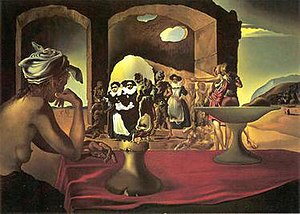Claude Monet:
Claude Monet was born on November 14, 1840 in Paris, France
He died on December 5, 1926 in Giverny, France
(The Art Story Contributors)
Throughout his life he moved around often, typically because of poverty, war and even to gain a better inspiration from his art.
In 1862 he moved to Paris, France and then went back to his home in Normandy in 1867. He then moved to London in 1870. Finally in 1883 he moved to Giverny, France where he spent the rest of his life painting his extraordinary flower garden. (Barton)
While living out several decades of his life in Giverny, he became a master gardener, and his garden inspired more than 300 of his works (Pritchard). His typical subject matters, and one of the most recognizable are the water lilies that grew on his pond. There are many works showcasing his work on the water lilies.
His garden is can be toured to this day in Giverny:
http://giverny.org/gardens/fcm/visitgb.htm This link takes you to the website that shows pictures, and admission prices to visiting Monet's garden.
 |
"Waterlilies"
Oil on Canvas painiting
1904
|
It is the simplicity of this painting that draws me into it. His detail work with the reflections in the water, and the contrast between the lilies themselves and the surface of the water is simply mesmerizing.
 |
Water Lily Pond
1899
Oil on canvas
35" x 37" |
Monet took great pride in going outside to paint what was in his luxurious garden. The Japanese bridge that he had installed within his garden was part of many paintings that he did. The one on the right is one of the most recognizable views that he painted in his garden.
People tend to be drawn to water gardens, because they bring on a sense of calming to the person (Pritchard). It certainly has that effect on me when I look out over a beautiful pond, especially with water lilies on them. There is something about those flowers that I just absolutely love and there's no distinguishable reason as to why.
 |
A Pathway in Monet's Garden, Giverny
1901-1902
Oil on Canvas
35" x 36.2" |
One of my Favorite paintings by Monet, this garden pathway is simply breathtaking. The detail in the flowers that he put into his paintings is something that I personally love about his artwork. Not to mention that anyone would love to have this kind of garden right in their backyard. His attention to detail with the sun dappling along the path, and even on the plants themselves.
 |
Vase of Flowers
1881-1882
Oil on Canvas
39.5" x 37" |
Monet happened to be the leader of the French Impressionist Movement, giving the movement its name (The Art Story Contributors). Before this movement, he followed the same structured art that any artist in Paris did.
Monet stepped away from clear ideas of form, linear perspectives, and he began to work with bold colors, unconventional compositions, and loose handling (The Art Story Contributors).
The painting to the right provides of an example of Monet's later style of smaller brush strokes and using them to build up the paint in a new way. He began to build large fields of color, and experiment with contrasting color combinations in some of his later works (The Art Story Contributors).
This painting resonates with me in a different way than the others. My great grandmother did many still life paintings, and many of them had houseplants, or vases with flowers in them. Although her and Monet have completely different styles, its the subject matter that connects with me the most for this painting.
Sources:
Barton, Laura. “Passport to Paris Artist Profile: Claude Monet.” Denver Art Museum, 2 Dec. 2013, denverartmuseum.org/article/staff-blogs/passport-paris-artist-profile-claude-monet.
Pritchard, Ashley. “Five Facts About Claude Monet's Water Lilies.” Denver Art Museum, 4 Dec. 2013, denverartmuseum.org/article/staff-blogs/five-facts-about-claude-monets-water-lilies.
The Art Story Contributors. “Claude Monet Biography, Art, and Analysis of Works.” The Art Story, The Art Story Contributors, www.theartstory.org/artist-monet-claude.htm.
Hodge, Susie. Monet: His Life and Works in 500 Images. Lorenz, 2009



















































